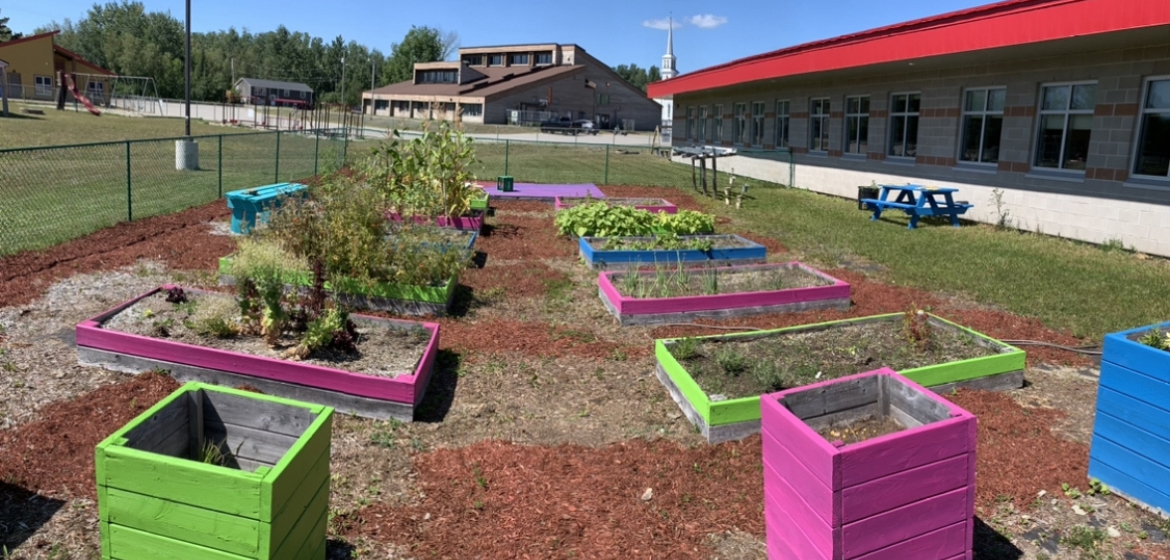“We are feeling that in order for this [food program] to be sustainable, our kids are always learning about food, nutrition and food sovereignty. We have to make it a pillar like math, literacy, culture/tradition, it has to be something that we are always promoting.” Terri-Anne Larry
Every day students at Natoaganeg School in Eel Ground, New Brunswick, eat lunch in a cafeteria with walls beautifully painted by a local artist of various animals and medicines found on the traditional lands of the Mi’kmaq. Students are encouraged to learn about Mi’kmaq culture, language and healthy food.
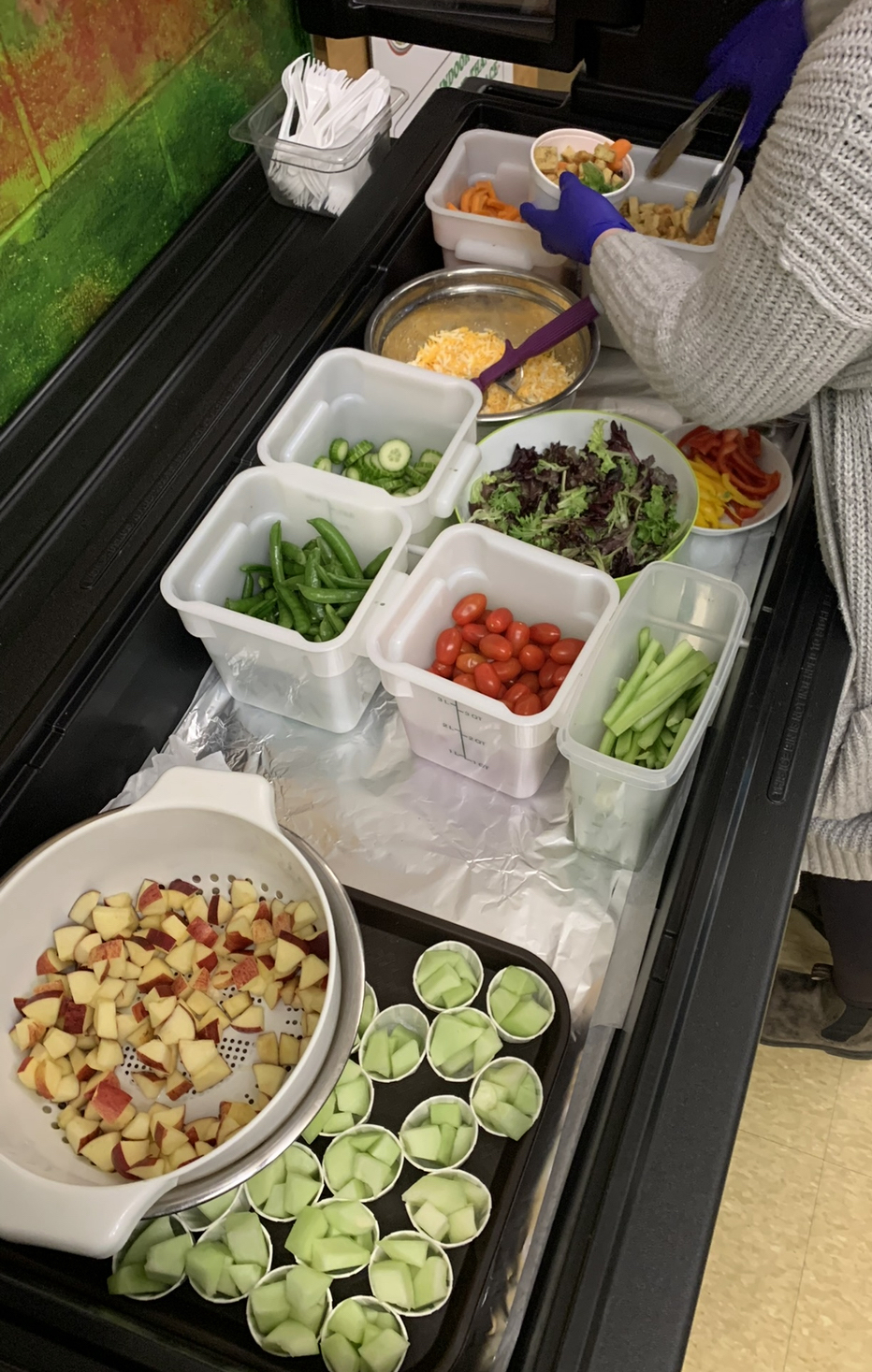 Every Monday is Mi’kmaq Monday at the school. Around 80 students from preschool to grade 8 are encouraged to wear something that makes them feel proud to be Mi’kmaq. Students participate in traditional activities that are offered in the classroom during the day. As part of Mi’kmaq Monday, students are served traditional food such as moose for their lunch.
Every Monday is Mi’kmaq Monday at the school. Around 80 students from preschool to grade 8 are encouraged to wear something that makes them feel proud to be Mi’kmaq. Students participate in traditional activities that are offered in the classroom during the day. As part of Mi’kmaq Monday, students are served traditional food such as moose for their lunch.
With support from partners such as Canadian Feed the Children, Natoaganeg school is able to offer students breakfast, lunch and a snack daily. The food program started with breakfast and expanded to lunch then a snack. A dietitian supported the development of a balanced menu and a food policy was created to encourage healthy food in school.
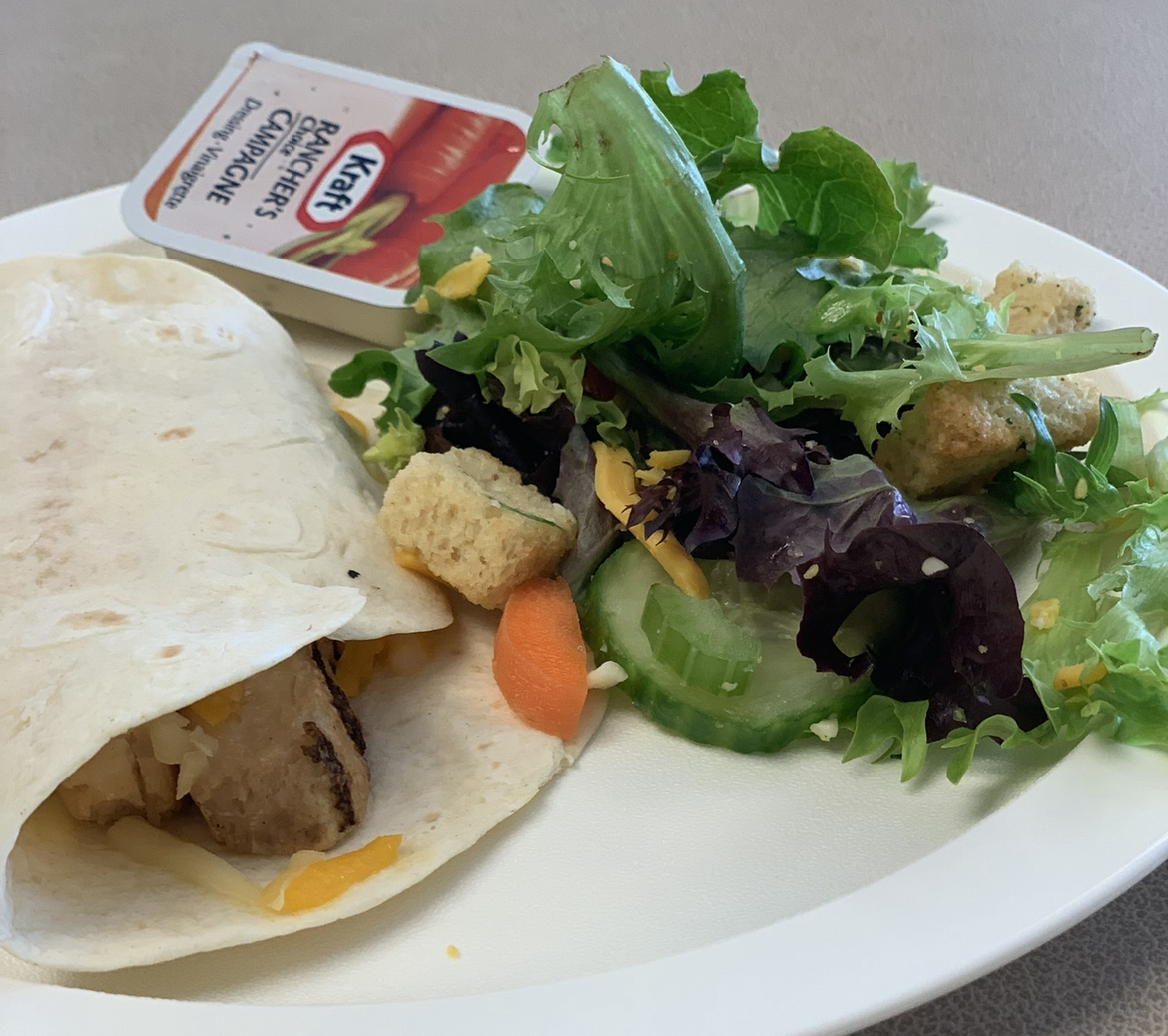 About five years ago the Natoaganeg school was built. With the new school, students enjoy eating lunch in their cafeteria. Their old school did not have a cafeteria so, before the new school was built, students had to walk to the band hall daily where they would eat lunch. There was a room in the band hall that was large enough for the students. Those students that did not eat lunch at the band hall would be bussed home and then back to the school during their lunch break.
About five years ago the Natoaganeg school was built. With the new school, students enjoy eating lunch in their cafeteria. Their old school did not have a cafeteria so, before the new school was built, students had to walk to the band hall daily where they would eat lunch. There was a room in the band hall that was large enough for the students. Those students that did not eat lunch at the band hall would be bussed home and then back to the school during their lunch break.
With the new cafeteria, potlucks and celebrations are held throughout the year for the students and families. Social and emotional development is incorporated into all learning. Family interaction is very important for the staff of the school. Due to the history of the residential school system, staff are working towards creating a stronger relationship with the parents. Since families were disconnected from their children and their school experience while their children were in the residential school, staff want to ensure parents receive information and feel there is a home and school connection.
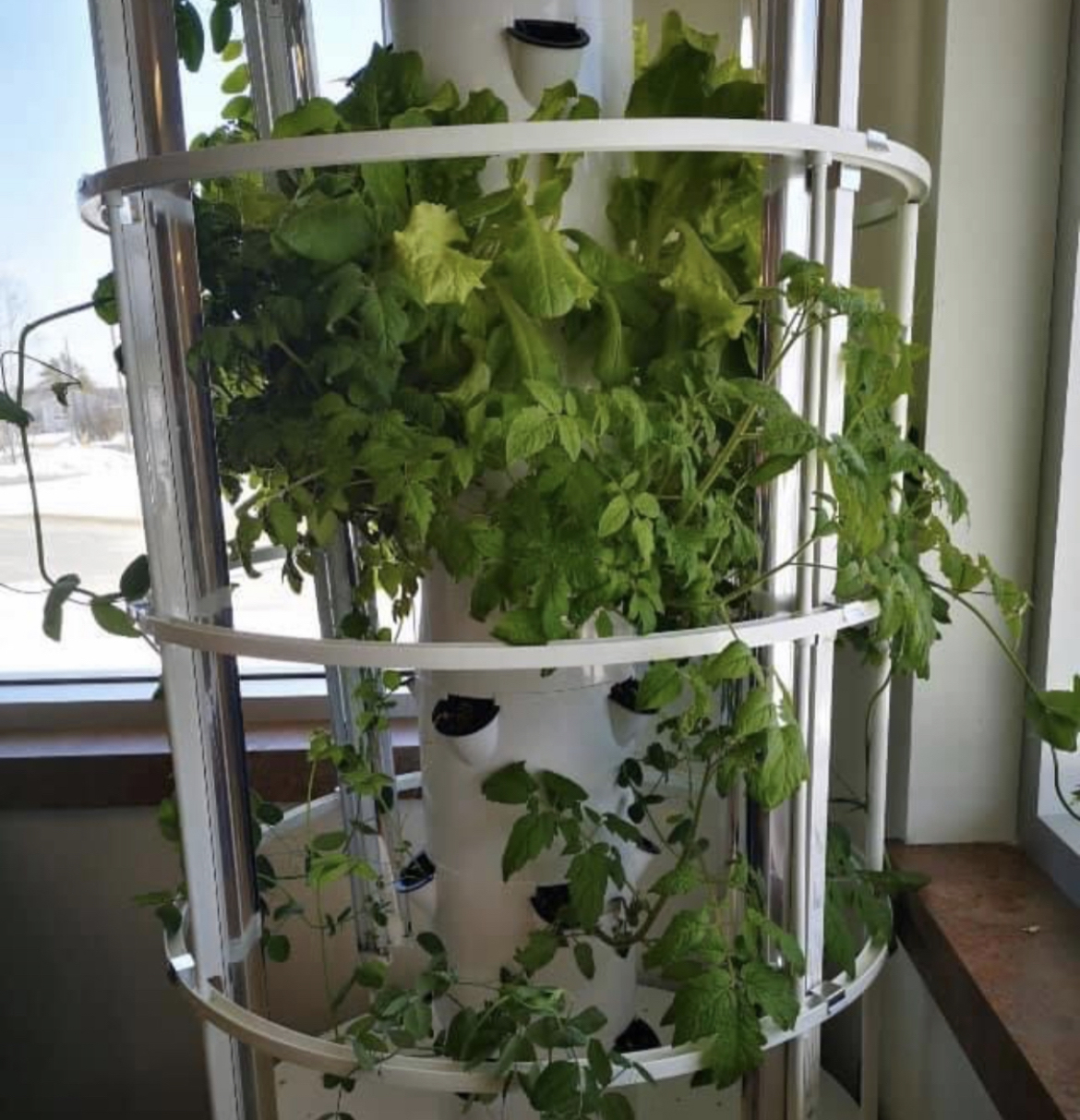
A garden is planted yearly on the school property. Students and staff work in the garden during the school year and in the summer students with their families are encouraged to care for it. In the fall, items from the garden are harvested. The harvested food is served in a meal for the students or it is frozen and stored. During the school year, along with planting lessons provided by the teachers, special activities and celebrations are planned by school staff to encourage student participation in the garden.
“They may not all love it that much but really come out with basic skills on how important it is to have their own garden; they don’t have to have these big elaborate gardens but have the mentality that they can take care of themselves with this.” Terri-Anne Larry
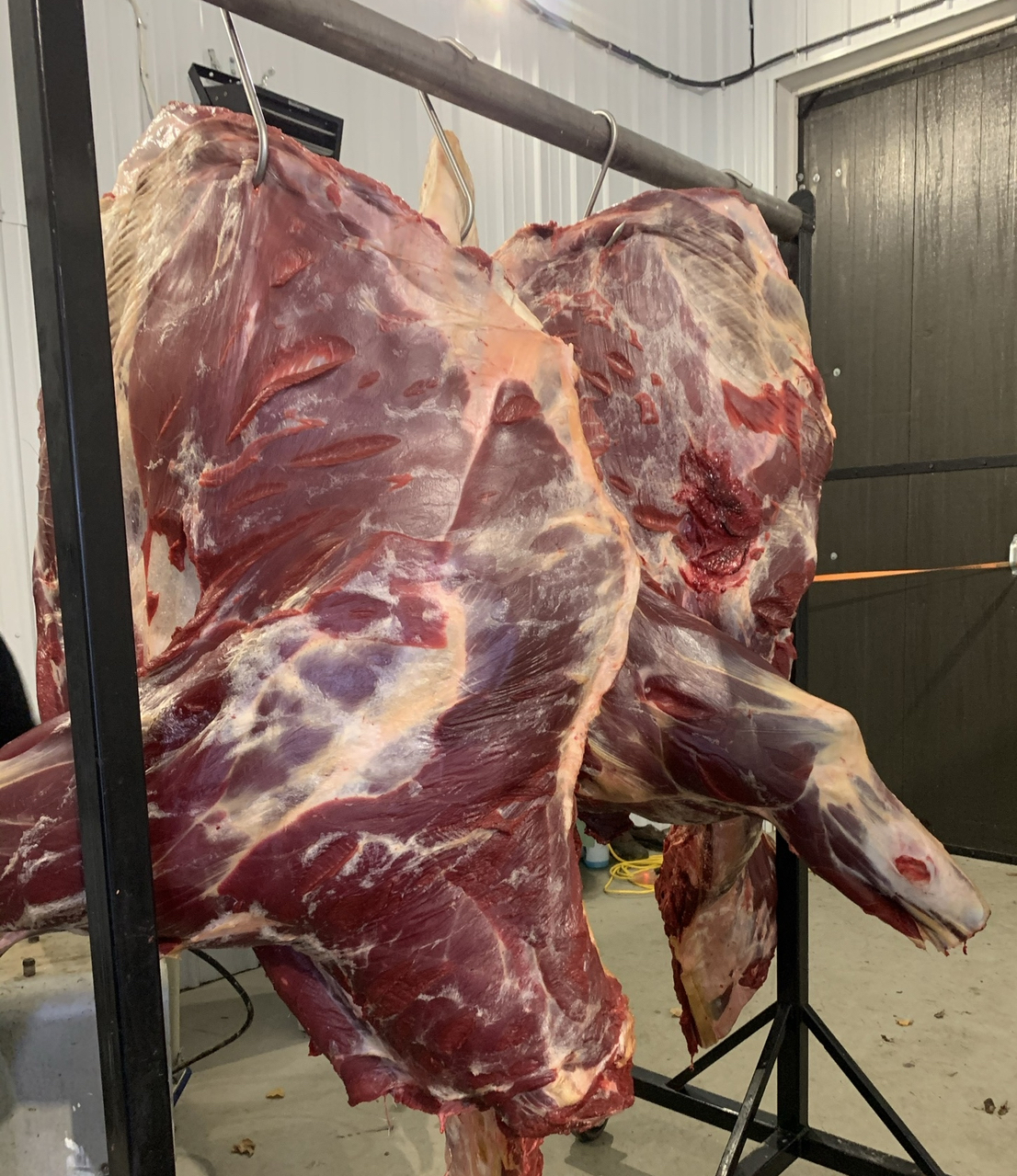 As part of their cultural teachings, land-based learning opportunities have been provided by community members, staff or the Community Cultural Worker. Community members support the school by teaching students cultural practices such as:
As part of their cultural teachings, land-based learning opportunities have been provided by community members, staff or the Community Cultural Worker. Community members support the school by teaching students cultural practices such as:
- skinning a moose
- learning about animals
- learning about the removal of quills to create baskets
- how to access traditional meat
Although time is limited, each class gets specific time to participate in these activities. The goal is to incorporate more dedicated time to land-based learning and food literacy skills in the curriculum going forward.


